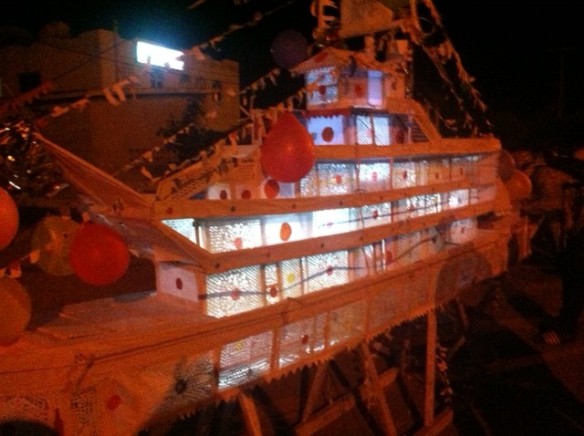A phone call from a fashion designer asking about taking a stall at Good Market; unusually this person wanted to see the set up and know the financials, so a few hours later we met. Chris was taken aback when Yai-Fatou politely but firmly refused to shake his hand: ‘I don’t shake hands with men’ she stated.
Having dealt with the details of the Market, I asked Yai-Fatou about her background? I knew she had exhibited at Fashion Weekend Gambia a couple of times, though we had missed her show this year and I wondered how she had got into fashion, especially as there are no art, design, tailoring courses nor institutions in The Gambia? Her response was surprising: she has a masters in Civil Engineering from University of Leeds, having first gained her BSc in mechanical engineering and business management in Canada. Yai-Fatou has worked for the UN, Gambian construction association, set up her own engineering consultancy and currently is working on a sea defence issue in the Senegambia area. In her spare time she creates fashion designs and oversees her shop and tailors in Bakoteh.
Yai-Fatou provided a different sense of why young Gambians lack self-esteem and their parents (and they) do not seem to value education. The University of The Gambia is only 10 years old, before it was established bright young people who wanted higher education had to find the ways and means of studying abroad; many never returned. Today’s home-grown graduates seldom find employment in the collapsed economy. Their families have paid over many years for an education that has failed to provide employment and an escape from poverty, so why bother?
Nowadays many youngsters don’t go to school or leave school early to support the family’s means of income generation or bum around on the beach, seeking easy dalasi off foolish rich toubabs – prostitution pays well. The laziest just hang around the compound. And that is the boys. For girls there is always work: preparing food in the compound can take half a day; gardening and farming the family’s food supply: rice, cassava, fruit and vegetables; rearing babies – their own, or others; washing and cleaning. I despair how to get girls literate with a chance of empowerment?
Despite this, being with Yai-Fatou was inspirational: she is a clever, committed, engaging woman. A soul food meeting that left me feeling hopeful for The Gambia after a day when I felt hopeless, having discovered 3 different auditors had signed off accounts over a 5 year period reporting non-existent investments.

